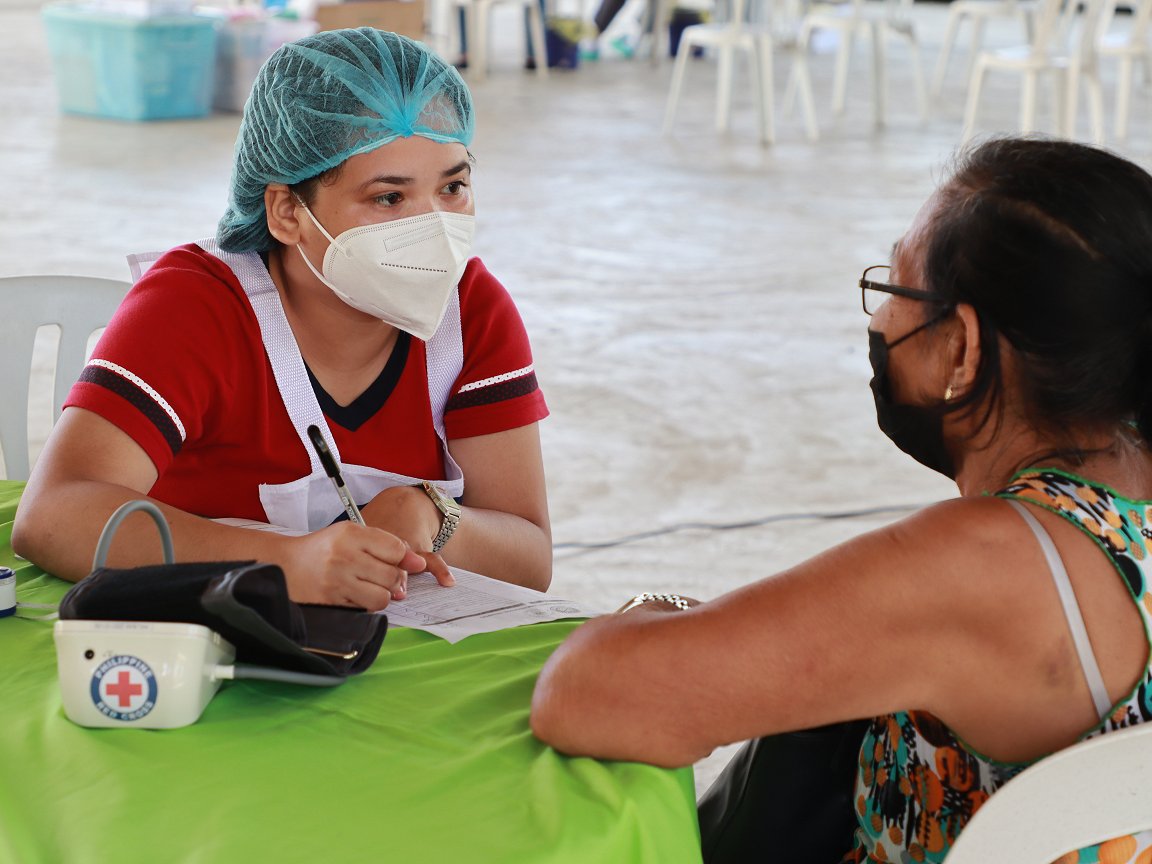
Blog: How can Covid-related social protection help prepare for climate risks?

By Manannan Donoghoe, Oxford University, and the Climate Centre
The year 2020 was unprecedented, and not only because of Covid-19; many countries faced compounding risks from multiple disasters, with nuanced and complex impacts.
A recent publication and data dashboard from the Climate Centre maps these intersections, charting the success and challenges of social protection (SP) as a risk-reduction tool for complex climate-related disasters.
Since the WHO declared a pandemic in March 2020, almost all countries have instituted some form of SP, reducing vulnerability and avoiding substantial increases in extreme poverty.
Poverty registers
The World Bank estimates that cash social-assistance programmes covered an additional 1.3 billion vulnerable people.
Countries scaled up existing systems, instituted novel distribution mechanisms, or created new programmes. India, for example, expanded existing public distribution, providing additional cash and in-kind support for poorer households, while the Philippines (photo) created new financial relief programmes.
However, challenges remain to making SP more inclusive. Covid-19 has had differential impacts, disproportionately affecting some groups more than others depending on occupation, socio-economic background, ethnicity, and gender; and pre-existing systems have struggled to account for this.
Poverty registers, for example, often used to target programmes, consistently miss those employed in informal sectors, absent from national registers, and middle-income households, not usually considered at risk.
“The pandemic has shown that poverty patterns can change quickly, impacting not only those in poverty but also those in danger of slipping into poverty,” the new Climate Centre brief says.
A second challenge has been the silo-like nature of organization in health, disaster, and economic response agencies.
Outcomes
In 2020, disasters and Covid intersections generated logistical obstacles that undermined traditional disaster responses and stretched the capacity of health, economic, and social policy responses.
Without an integrated SP system across national agencies, distributing funds and resources across overlapping shocks becomes difficult, increasing the risk of inequitable outcomes.
This is where SP could be most useful: it can provide an income floor, helping households avoid choices that entrench poverty.
Economically secure households are less likely to make decisions that compromise long-term stability, like selling assets or undertaking precarious work.
Despite substantial hardships, Covid has suggested opportunities to catalyse new approaches to disaster management. As countries continue to manage the pandemic in 2022, climate-related disasters loom, bringing increasingly urgent logistical challenges.
Covid-19 has already proved that SP is a powerful tool to minimize risk. We now need to galvanize that momentum to ensure these ad hoc mechanisms are transformed into more substantive long-term programmes.
Philippine Red Cross Covid vaccination in remote areas. The country was among the many that have scaled up social protection to combat the pandemic; it may harvest lessons on how the concept can be applied to climate risks. (Photo: PRC via IFRC)